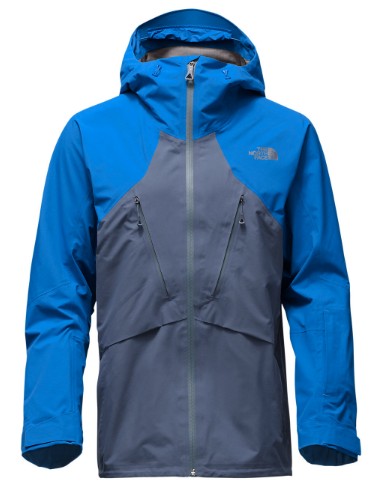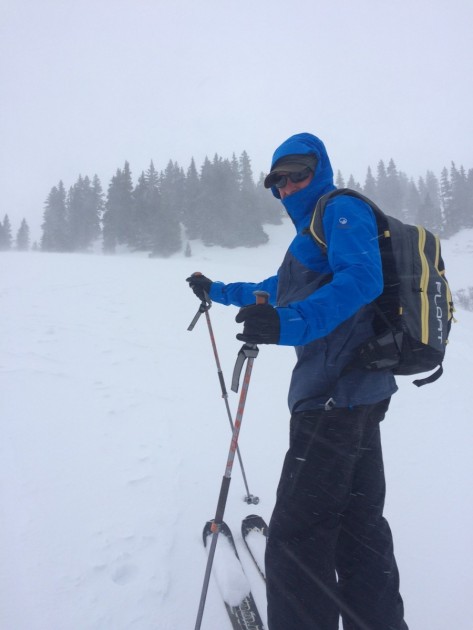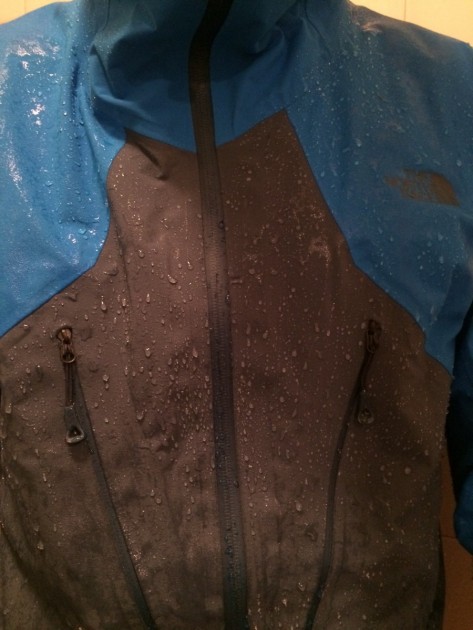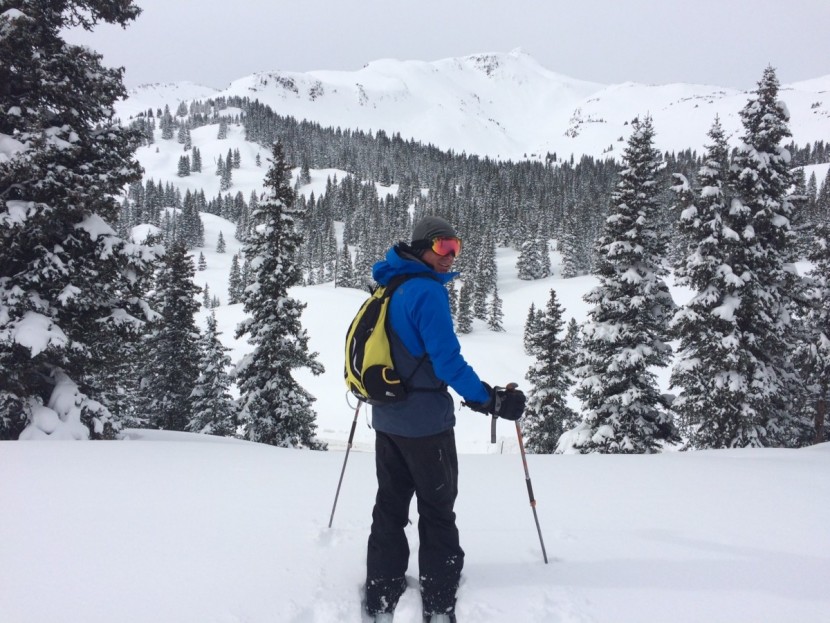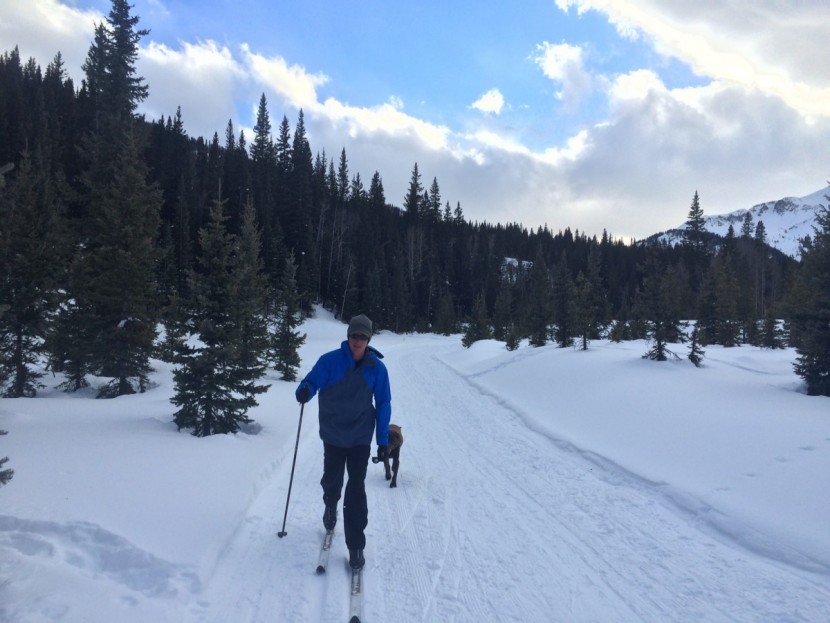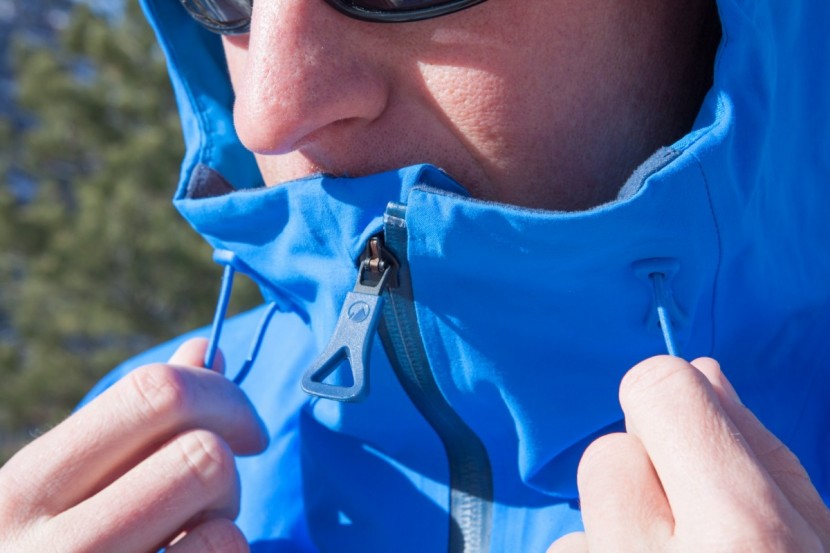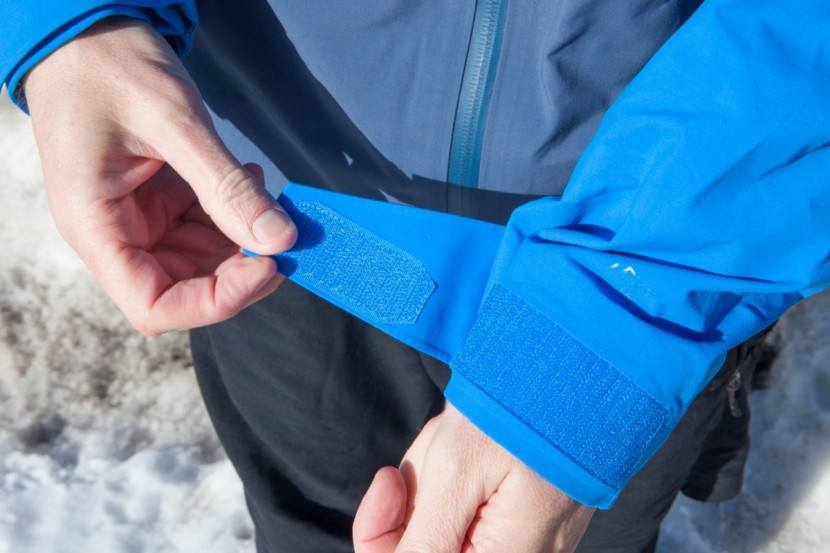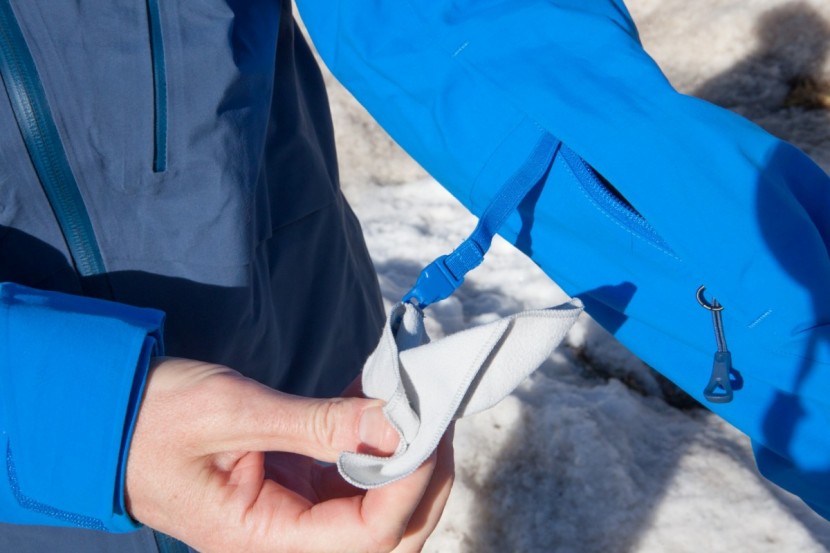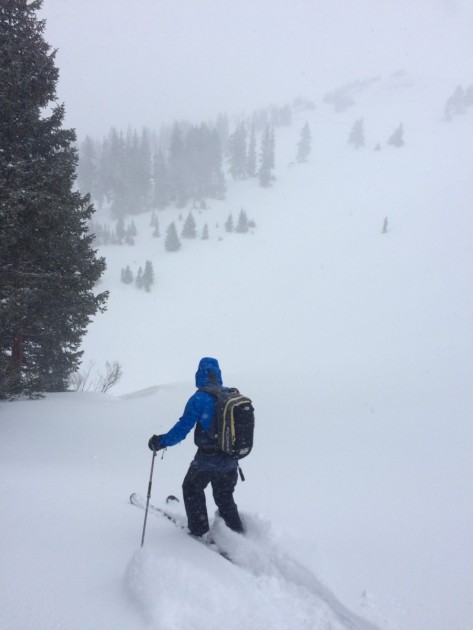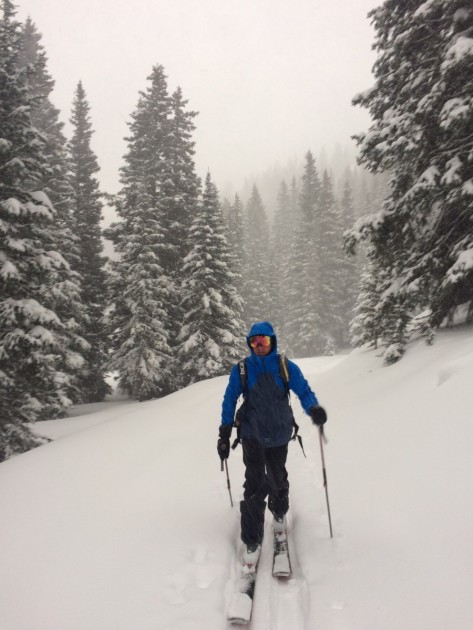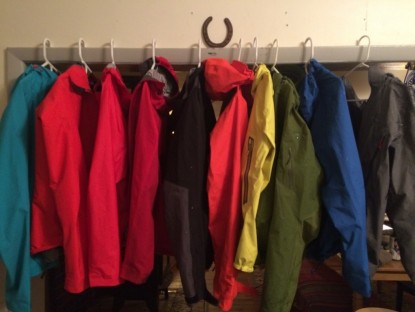The North Face Free Thinker Review
Our Verdict
Our Analysis and Test Results
While the fit itself was perfectly fine, wearing this jacket made one feel as if they were wearing a large overcoat, insulated and cut off from the outside world. While we need a hardshell to protect us from the weather, it is also critical for the mountain and outdoor sports that we play that our clothing works with us, moving as we move, something this jacket didn't do very well, and in stark contrast to our Best Overall Hardshell, also made with GORE-TEX Pro, the Arc'teryx Alpha FL.
Weather Protection
We loved the long, low hem of this jacket, combined with the internal powder skirt, for how well it performed keeping out the deep powder. However, in our shower test, we noticed that this jacket suffered by far the most wetting out of the face fabric of any jacket after our test period. This means that the DWR coating applied to the outside of this jacket had mostly worn off, making it perhaps the poorest quality DWR coating of the review.
More problematic, however, was the fact that just like the Fuseform Jacket, and the Patagonia Triolet, the hood was ineffective at channeling the water from a severe downpour off the sides of the head. Instead, water poured over the brim of the hood, and also ran down the edges and easily washed down the inside of the collar and jacket. As a skiing specific jacket, heavy rain should not be a top concern, but you never know… We couldn't give this jacket more than 6 points for weather protection, despite its top-quality membrane.
Weight and Packability
We measured the weight at 24.7 ounces for a size medium. This makes it one of the heavier jackets in our lineup. It was also the largest jacket in the review when all rolled up and packed away, meaning it was the least packable. If you're not wearing this jacket, you certainly don't want to be carrying it with you.
Mobility and Fit
The large, free flowing fit of this jacket, exemplified by the low hem line, was one of the positive features we loved. Like the Fuseform, and also the Outdoor Research Furio, we felt that the sleeves were simply too short. However, this is not such a big problem for a skiing-only jacket as it is when you are planning to go ice climbing. We thought the fit was larger and more spacious than just about any jacket we tested, but in a good way, and we were always able to comfortably layer beneath it. What we didn't like was how stiff, crinkly, and immobile feeling the combination of the GORE_TEX Pro membrane with the 70D face fabric was. A jacket like the Arc'teryx Beta AR was able to use the same membrane in conjunction with face fabrics just as durable while still retaining fluid and easy movement, something that was missing with the Free Thinker. 7 out of 10 points.
Venting and Breathability
We appreciated that The North Face's marketing claims about this jacket told the story as it is, and didn't throw around a lot of words like “lightweight” or “skinning uphill” when describing this jacket. The truth is, despite using a highly breathable membrane, this jacket is heavy and hot, great traits for keeping warm at a ski resort, but terrible attributes for the backcountry enthusiast. While this jacket does have pit zips, they are much smaller than the average found on the Black Diamond Helio Alpine Shell, and only have one zipper instead of the ubiquitous two. The venting options on this jacket almost seem like an after-thought, and are nothing like the very well designed options found on the Outdoor Research Furio or Rab Latok Alpine Jacket. In the end, we gave it a low 5 out of 10 points for venting and breathability.
Features
This jacket was clearly designed with downhill skiing in mind. The only noticeable differences were the location of the chest pockets (lower and wider on the body) and the design of the wrist cuffs. We loved the forearm pocket with goggle wipe, integrated powder skirt, internal stash pockets, and internal zip pockets with media port. What we didn't enjoy as much was the difficult-to-adjust front hood drawcords and the gigantic Velcro wrist enclosures.
These wrist enclosures are clearly designed to wrap the wrist over the top of the ski glove, but we tend to like ski gloves with wrist sleeves, which make it easier to keep the snow out. We had a very hard time fitting the wrists of this jacket into our gloves, and feel that a much smaller and simpler wrist enclosure, like our favorites found on the Arc'teryx Alpha FL and Beta AR, work much better to accomplish the same thing. Our battles with these wrist cuffs inspired us to give one less point than we awarded to the Fuseform, 8 out of 10.
Best Applications
This jacket is designed with skiing in mind and would make a great coat for riding at the resorts, or if you happen to be lucky enough to have a heli drop at the top of some remote mountain range that we all dream about. It is not designed for alpine climbing, mountaineering, or skinning uphill, but we still wanted to see how it compared to the all-around jackets we typically test in this review. While it was one of the lower scorers in our comparison review and based on the metrics we value, we still think it is a worthy jacket for downhill skiing.
Value
This jacket retails at an astronomically high $599, making it the most expensive in this review. Also, our favorite jacket, the Arc'teryx Alpha FL, uses the same GORE-TEX Pro membrane and costs over $200 less. The point is while this is a well made and durable jacket, there are far more cost-effective options out there that ranked much higher in our comparison testing.
Conclusion
The North Face Free Thinker Jacket is a top-end skiing jacket best used at the resorts when the weather has turned truly apocalyptic. It is not a good choice for trying to climb mountains in, and should be considered only if you need a high-end hardshell for skiing. While it is a well-made jacket that has some worthy features, many other jackets in this review are likely to serve the reader better.


